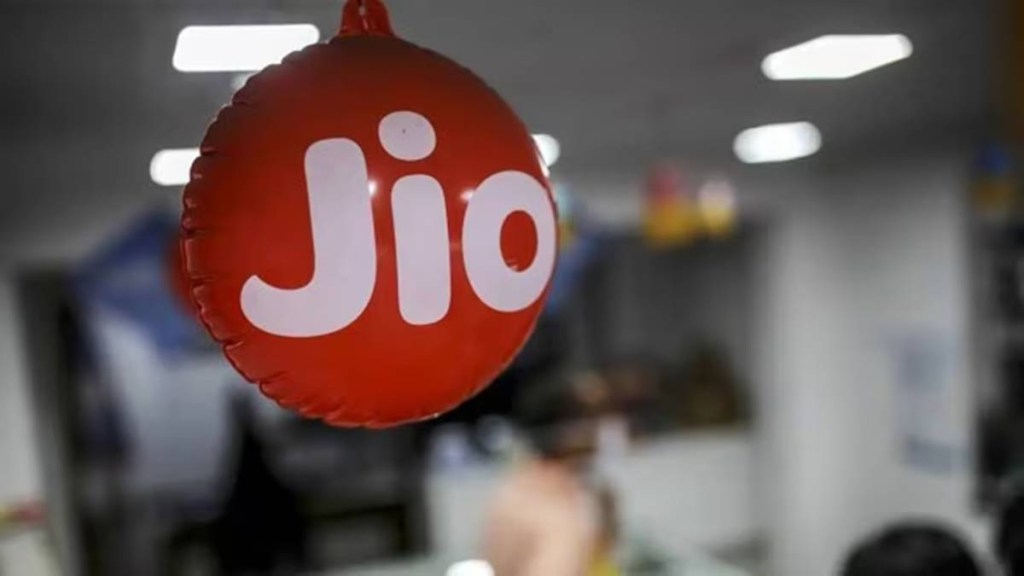Jio Platforms, the parent company of telecom operator Reliance Jio, on Friday reported a 2% quarter-on-quarter (q-o-q) growth in its net profit to 5,693 crore for the April-June quarter. Consolidated revenue from operations during the period rose 2% q-o-q to29,449 crore on the back of subscriber additions, growth in data and voice consumption.
Average revenue per user (Arpu) per month during the quarter was flat sequentially at Rs 181.7 in the absence of tariff hikes. This was Jio’s fourth continuous quarter of flat Arpu. The impact on Arpu was also due to the free unlimited 5G offer. The benefit from the recent tariff hikes, which came into effect on July 3, will reflect in the July-September quarter. The company said a better subscriber mix in the Arpu growth was partially offset by increasing mix of promotional 5G traffic, offered unlimited to subscribers and not yet charged separately.
The numbers were broadly in line with analysts’ estimates. Net profit growth at 2% was marginally down from 2.5% in the preceding quarter. Revenue growth in the April-June quarter was also lower compared to 4.2% sequential growth in the previous quarter. On a standalone basis, Reliance Jio’s net profit rose 2% sequentially to 5,445 crore, whereas its revenue from operations rose 2% q-o-q to26,478 crore.
The company added 7.9 million subscribers during the quarter compared to 10.9 million subscribers additions in the preceding quarter. At the end of the June quarter, total subscribers were at 489.7 million, up from 481.8 million as of March end.The growth was largely due to demand from 2G users for transition to JioBharat 4G phones, and the churn in subscriber base of Vodafone Idea and port-ins to the Jio network.
Of the total 490 million user base, Jio’s 5G base was at 130 million, up from 108 million in the preceding quarter. Jio is the only company with this large a user base outside China. Its 5G network now carries 31% of its wireless data traffic, with the entire 5G data being carried on Jio’s own 5G+4G combo core, it said.
“Jio’s True 5G network, covering 85% of India’s 5G capacity, continues to attract users, while the fixed broadband offerings are witnessing increasing consumer traction both in homes and enterprises,” said Mukesh Ambani, chairman and managing director of Reliance Industries.“The attractive value proposition offered by Jio is enabling more Indians to transition to next-gen data networks. This is further accelerating the digital revolution which is reshaping communications, analytics and computing, media and entertainment and commerce in India,” Ambani added.
Owing to revenue growth, consolidated operating profit or Ebitda rose 2% q-o-q to Rs 14,638 crore. Ebitda margin, however, was flat sequentially at 49.7%. This was because of higher network operating expenses, selling and distribution expenses, licence fee/spectrum charges, among other operating expenses.The company’s finance cost rose 9.5% sequentially to `1,115 crore. Increase in finance cost was driven by higher leverage, the company said.Total data traffic rose 7.8% q-o-q to 44.1 billion GB, mainly due to the Indian Premier League held from March to May, high number of fibre broadband and AirFiber users added during the quarter.
On the back of the strong demand of bundled entertainment and connectivity solutions, Jio recorded its highest ever quarterly home connects at over 1.1 million on AirFiber, the company said, adding that globally it has become the largest operator in terms of data traffic.
Average data consumption per user per month rose 5.6% sequentially to 30.3 GB.“Ubiquitous, high-quality, affordable internet is the backbone of Digital India and Jio takes pride in contributing to this. Our new prepaid plans would foster industry innovation towards 5G and AI and drive sustainable growth,” said Akash M Ambani, chairman at Reliance Jio. “Jio with its superior network and new service propositions would further build its market leadership with a customer first approach,” Akash Ambani added.
The total voice consumption on the network, however, fell 1.4% sequentially to 1.42 trillion minutes during the quarter. The average voice consumption per user per month fell to 977 minutes from 1008 minutes in the preceding quarter.
